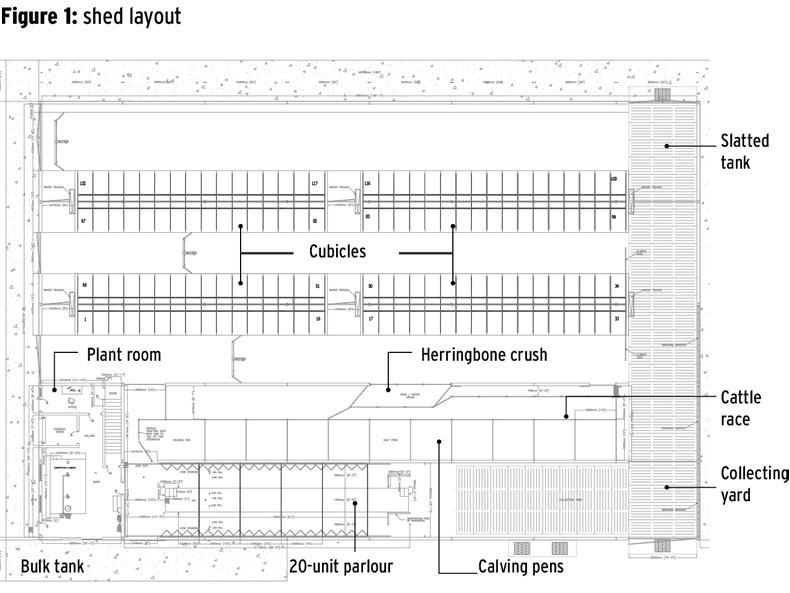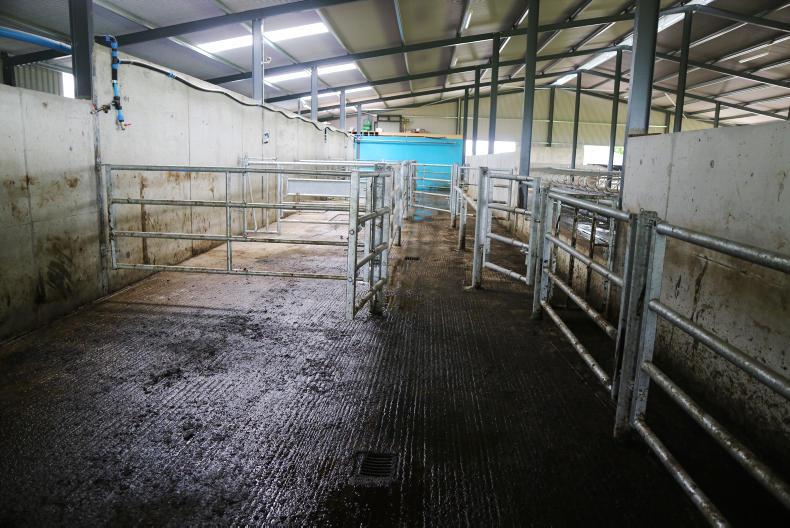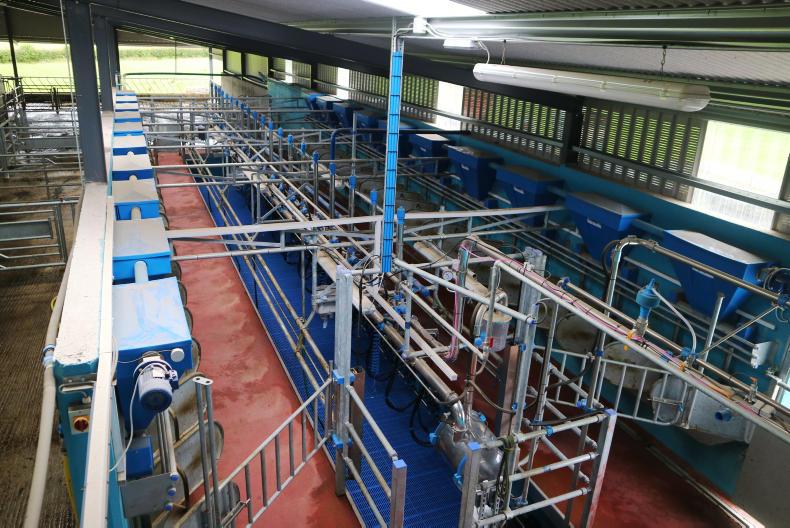Eamon, Joan and their son Enda Keaveney from Ballymoe, Co Galway, have been farming in partnership since 2015. Enda originally completed a degree in construction in 2009. However, the opportunities in the construction sector were limited at that time so he decided to look at farming as a career path. With a grazing platform of 40ha of good-quality free-draining land and an established herd of 70 Friesian cows, the foundations were in place. Enda completed a professional diploma in dairy farm management, worked on dairy farms in New Zealand for 15 months and worked on Irish farms to learn how to run an efficient modern dairy farm.
When he came home to farm with his father full-time, cow numbers started to increase but quota and limited facilities were a barrier to expansion. The parlour was too small for what they needed and winter accommodation was coming under pressure for the expanding herd. The Keaveneys toyed with the idea of knocking some old sheds and expanding existing ones but they felt these sheds would also have to be replaced. They eventually decided to build a new shed which would facilitate cow accommodation, dairy parlour and dairy under one roof. Cow numbers are now at 120 but Enda says the long-term plan is 150. “Our soil indexes are all threes and fours so now we just need to reseed paddocks to be able to grow enough grass,” he explained. The Irish Farmers Journal visited the Keaveney farm to see the new facilities.

What was very noticeable walking around the development and talking to the Keaveneys was the thought process they put into each investment. Everything had a long-term view in mind. The area under roof measures 160ft x 106ft and there are 124 cubicle beds. Enda and Eamon came up with the design based on ideas they saw from visiting other sheds around the country. The cubicle area and most of the feeding area is on one side of the shed. The main cow handling facilities are in the centre. The other side of the shed is dedicated to the 20-unit milking parlour, and the plant room.
Bilk tank
The bulk tank has capacity for 12,750l of milk, which is more than sufficient for the 120-cow herd. The Keavneys bought this large tank so they could store milk for longer, reducing the amount of times the milk truck has to visit the farm. Their milk processor, Aurivo, pays a bonus for three-day collections. Enda said this was the main driver for the larger tank. He worked out that at their current level of production the bonus system will pay for the bulk tank in 11 years. The larger tank also allows scope to expand production somewhat without worrying about milk storage capacity. A heat recovery unit takes the heat produced from the refrigeration process from the bulk tank and this is used to heat the water in the hot water tank. This heat recovery unit heats the water in the hot water tank to 55°C. An electric immersion is used to heat the water to reach 80°C. The immersion only comes on at night, taking advantage of the lower electricity rate. A plate cooler was also installed in the dairy which uses the bore well water to cool the milk coming from the parlour before it goes into the bulk tank. All of these investments come with a substantial initial cost but Enda says the investment will pay for itself in the long run with the lower energy bills. This is apparent already – on average the monthly ESB bill only costs €300 for the dairy unit.
Parlour
The Keaveneys went with a 20-unit Dairymaster parlour. The main features are automatic cluster removers, swingover arms, automatic feeders and an autowash system. A 16t split meal silo was purchased to supply meal to the automatic feeders and store meal for calves etc.
“The new parlour has made life so much easier. In the old six-unit, 18 rows of cows went through the parlour before everything was milked. Now, with the bigger setup, milking is finished after six rows go through” said Eamon.
Interestingly, they went for plastic pig slats inside the pit. Slats were chosen rather than mats because they felt cleaning would be easier. “There is a great spring off the slats for walking and when we are washing down all the dirt underneath the slats travels to the sump. A sump pump then pumps this water to the dirty water tank,” said Enda.
They both agreed the parlour was well worth the investment because now one person can milk all the cows easily on their own. What’s more, they are no longer afraid to ask relief milkers to come in if they are both away from the farm. Eamon said the old parlour required experienced hands. “Cupping on used to start at 05.45am and we wouldn’t be finished until 09.45am. Now cupping on starts at 7.00am and we are finished milking by 8.15am.”

Handling area
The main cow handling area is beside the parlour. After milking, any cows in heat can be drafted into a holding pen. At the moment, the Keaveneys have to leave the pit to separate cows but the plan is to set up a pully system to make this job easier. This area is multipurpose. In spring, it is used for calving cows and with a number of pen divisions. The furthest pen is used to hold cows close to calving during the night while the other pens can be used for calving cows. Two calving gates are useful here too. There is a herringbone crush which they will use for scanning cows, tail clipping and TB testing. This leads on to a cattle race which they use for artificially inseminating cows. By making this area multipurpose, the Keaveneys are maximising the return on their investment. A drainage channel runs through the centre of this area and this is piped back to the slurry tank. All the gates can be opened back to allow a tractor to drive in to clean away the straw bedding after the calving season. Tractor slats and a swinging feed barrier at the far end of the area means access is not an issue.
Slurry tank
There is a 9ft deep L-shaped slurry tank at one end of the shed. The slats are 16ft 6in long and if the tank ran in a straight line it would be 155ft long. The slatted area acts as a collecting yard for cows during the year and is used as animal accommodation during the winter. Dairymaster winch and pully system scrapers were used in the shed for cleaning the cow passages. During the winter, they are timed to turn on every four hours. There are three in total, when one scraper does a run in one direction, the other two work in the opposite direction. When it reaches the end of the sequence it will return to its base. The cubicles are 45in centres and the brisket board helps prevent cows sitting too far forward. All the steel work was carried out by Teemore Engineering.
Cost
The whole setup has come at a considerable cost but it is a lifetime investment and is already paying dividends in terms of reduced workload. “With the new facilities in place and the daily workload reduced, I can do some casual work locally.” said Enda. They used up all the grant on the milking equipment and the bulk storage tank. In the TAMS II, a young trained farmer is eligible for 60% grant aid up to an investment ceiling of €80,000, while a general applicant is entitled to 40% grant aid up to €80,000. Because they were in a partnership, the investment ceiling doubled to €160,000, which meant they could get a total grant of €80,000 towards pre-approved investments (40% x €80,000 + 60% x €80,000 = €80,000). Minus the grant Enda said it cost €2,208/cow excluding VAT based on current cow numbers (120 cows). The Keaveneys said everyone who worked on the project was excellent, which made it very straightforward. Enda said the whole family has played a part in the success of the farm including his brothers Kevin and John and his sister Sinéad.






 This is a subscriber-only article
This is a subscriber-only article


















SHARING OPTIONS: